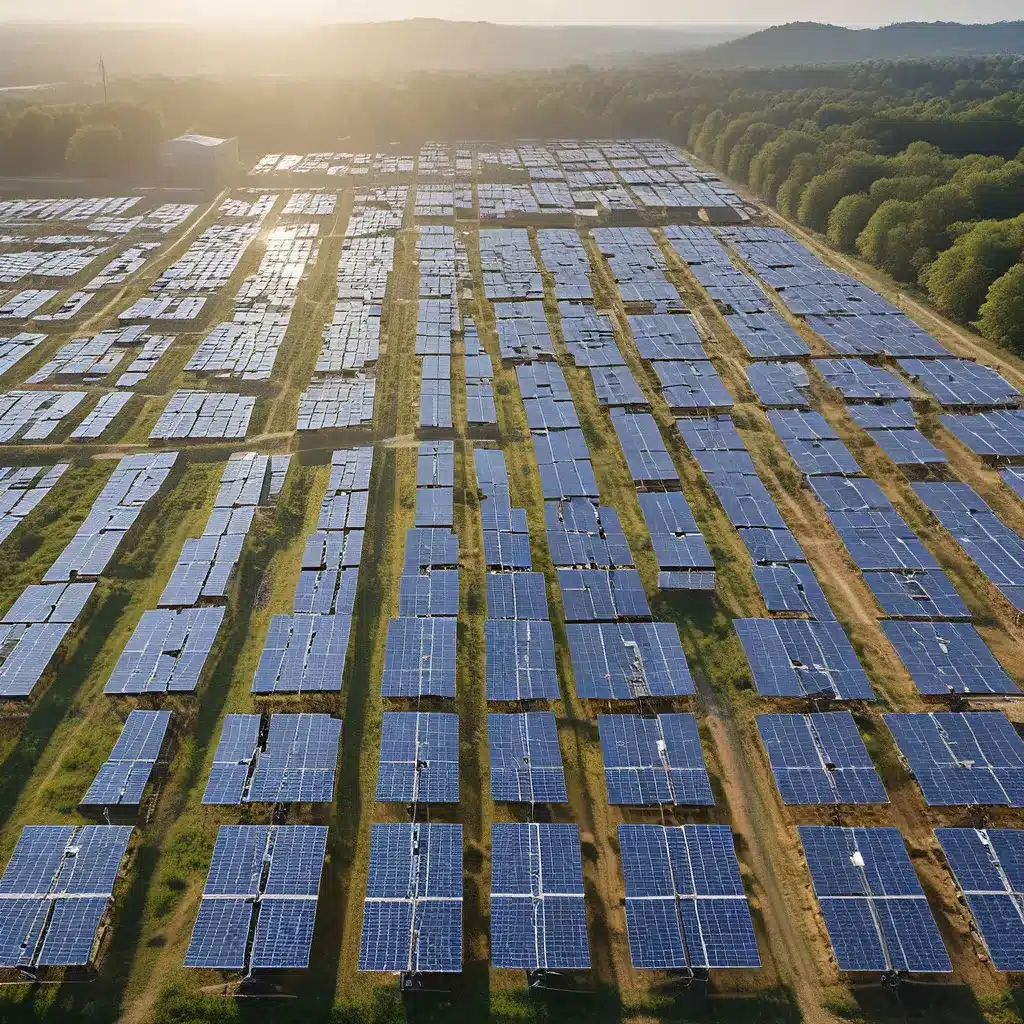
Ah, microgrids – the unsung heroes of the renewable energy revolution! These little powerhouses are poised to shake up the way we think about electricity, and I can’t wait to dive in.
The Rise of Microgrids: Decentralizing Power Generation
You know, when I first heard about microgrids, I’ll admit I was a bit skeptical. I mean, how could these small-scale, localized energy systems possibly compete with the massive, centralized power grid we’ve all grown accustomed to? But after learning more, I realized that microgrids are the key to unlocking a decentralized, sustainable energy future.
According to industry experts, microgrids are poised to become the new standard in power generation, not just the exception. And it’s easy to see why. These self-contained energy systems are able to integrate a variety of renewable sources, like solar and wind, along with energy storage and backup generators. This allows them to operate independently of the main grid, providing reliable and resilient power to communities, businesses, and even entire neighborhoods.
One of the key factors driving the growth of microgrids is the increasing integration of renewable energy sources. As we collectively strive to reduce our carbon footprint and transition to a more sustainable energy future, microgrids are the perfect solution. They allow us to harness the power of the sun, wind, and other clean energy sources, while also optimizing energy use and providing peak shaving capabilities.
The Anatomy of a Modern Microgrid
But what exactly makes a microgrid a microgrid? According to the experts, a modern, advanced microgrid consists of a few key components:
- Renewable Energy Source: This could be solar panels, wind turbines, or even a combination of renewable sources.
- Optional Battery Storage: To provide backup power and smooth out fluctuations in renewable energy generation.
- Reliable Asset: This could be a natural gas generator or another type of backup power source.
- Centralized Control: All of these elements are orchestrated and optimized by a sophisticated microgrid controller and energy management system.
The beauty of this setup is that it allows the microgrid to operate autonomously, disconnecting from the main grid if necessary to create a self-sufficient “power island.” This ensures a reliable and resilient energy supply, even in the face of grid outages or other disruptions.
And the benefits of microgrids don’t stop there. These decentralized systems also enable peer-to-peer (P2P) energy trading, where individual energy producers (or “prosumers”) can directly sell their surplus electricity to their neighbors. This not only reduces the strain on the main grid, but also gives consumers more control over their energy sources and costs.
Overcoming the Challenges of Microgrid Implementation
Of course, as with any new technology, there are challenges to overcome when it comes to implementing microgrids. One of the biggest hurdles is understanding the unique requirements of each customer.
As INNIO’s Robert Autengruber explains, “Every microgrid is different. The business case is really unique to the use case of the customer.” Thorough planning and a deep understanding of the customer’s needs are critical for a successful microgrid installation.
Another challenge is navigating the regulatory landscape. Governments will need to determine how to integrate microgrids into the existing energy market, including how to handle taxes, fees, and the interaction between decentralized and centralized systems. Ensuring a smooth transition for both the workforce and the energy market as a whole is a key concern.
But despite these hurdles, the potential benefits of microgrids are simply too compelling to ignore. From reducing energy costs and enabling the sustainable use of renewable sources to enhancing the engagement of “prosumers” and lessening the burden on the main grid, these localized energy systems are poised to revolutionize the way we power our communities.
The Future of Microgrids: Powering a Decentralized Energy Future
As I’ve delved deeper into the world of microgrids, I’ve become increasingly excited about the possibilities. Imagine a future where every neighborhood, business, or even individual household has the ability to generate, store, and trade their own clean, renewable energy. It’s a vision of a decentralized, resilient, and sustainable energy system that could truly transform the way we power our lives.
And the good news is, this future is already taking shape. We’re seeing exciting pilot projects and real-world implementations of microgrid-powered P2P energy trading systems in places like Brooklyn, New York and Bangkok, Thailand. These early successes are paving the way for wider adoption and inspiring new ideas and innovations.
Of course, there’s still a lot of work to be done. Regulatory hurdles need to be overcome, business models need to be refined, and consumer awareness and acceptance will be key. But as the world continues to grapple with the urgent need for sustainable energy solutions, I believe microgrids will emerge as a cornerstone of the new, decentralized power grid.
So, what do you think? Are you ready to embrace the power of microgrids and help shape the future of our energy landscape? If so, I’d encourage you to check out Firewinder’s renewable energy solutions – they’re at the forefront of this exciting new frontier. The possibilities are endless, and the time to act is now. Let’s get started!

